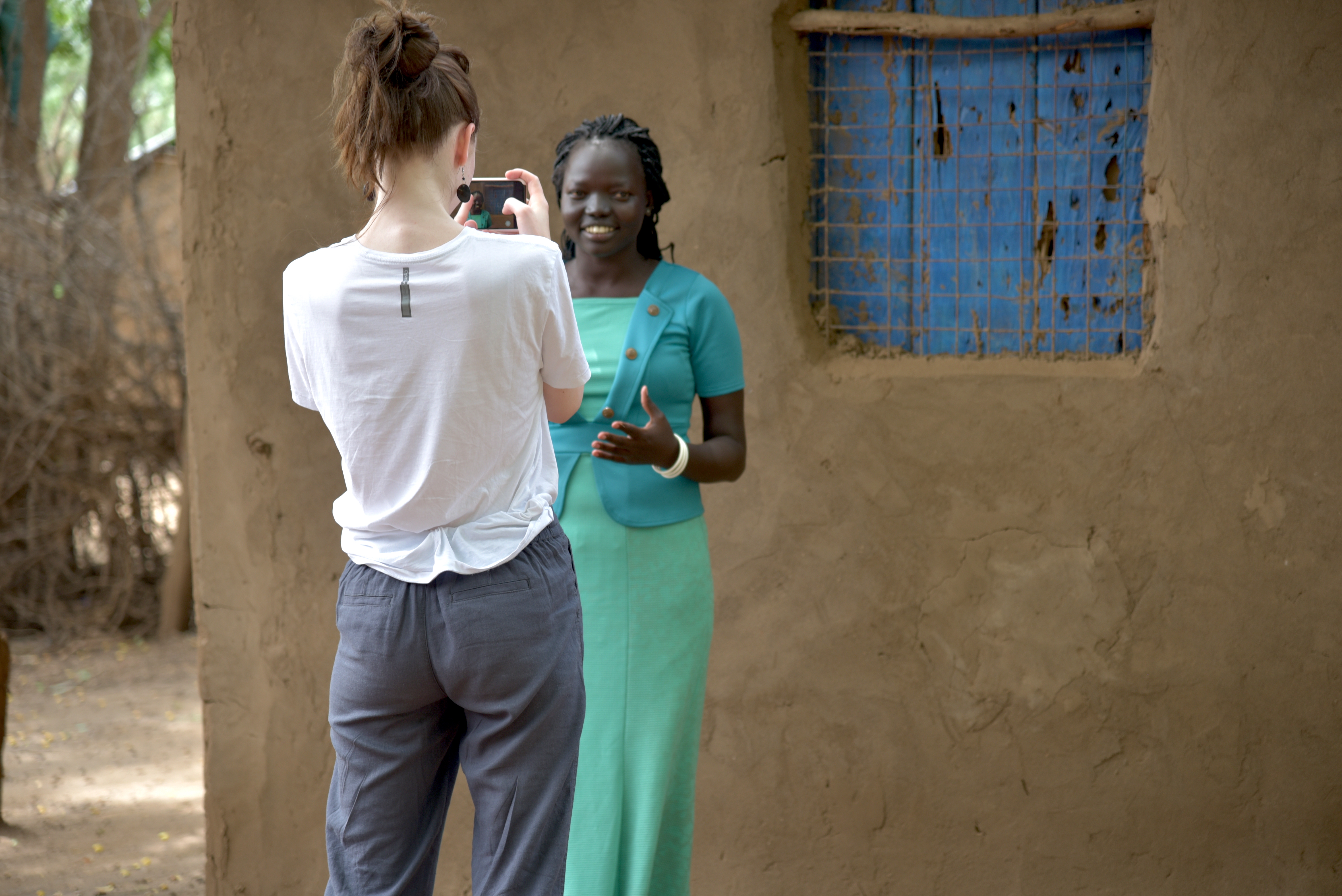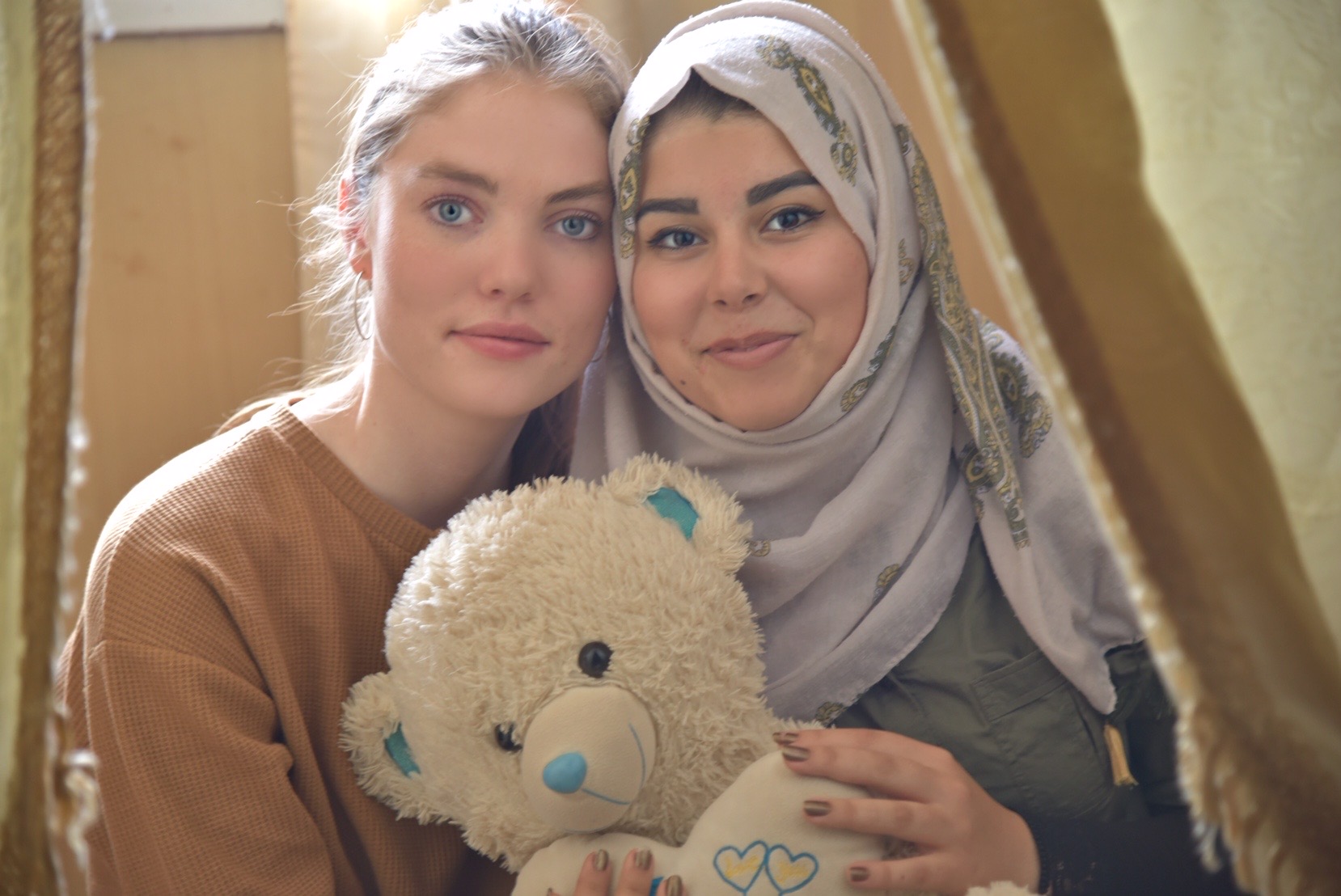It is 10:30pm on a Friday night in New York City and I’m lying in bed, staring at my iPhone screen. I’m not scrolling through Instagram or texting that guy from Hinge. I’m copying and pasting WhatsApp messages into Google Translate. I’m translating Farsi into English and English into Farsi. I’m in the middle of a riveting conversation with a 17-year-old Afghan refugee named Madina.
What was it like leaving your boyfriend behind in Afghanistan?
I copy the Farsi translation and quickly return to my WhatsApp screen. Paste. Send.
I cried a lot. I still love him. shoots back the reply.
How do you cope with leaving someone you love?
I listen to his voice messages. I listen to the songs he used to play for me. When I want to feel him near me, I look at the sky, because I know we both live under one moonlight.
I marvel at the universality of post break-up regimens, no matter if you’re Afghan or American. Another notification interrupts my thoughts. Copy. Paste. Translate.
My sister and mother are convinced I need to be with him, but I tell them no.
Why?
He doesn’t give me the freedom I deserve. He stalks me on social media. He won’t let me post what I want. I need freedom. I know this now after coming to Brussels.
My fingers pause. Wait. After coming to Brussels? Could that mean – perhaps – not all of the stories are true? That some stories of refugees, people who had to leave everything behind in search of a better life, are actually stories of resurrected hope, realized dreams, and newfound freedom? I stare at my bedroom ceiling, pondering this. I decide to ask Madina, because I remember I can. We’re friends.
What do you mean?
Back in Afghanistan, we were wealthy. I was living like a princess, but I felt like a prisoner. It’s worse for other girls. Some only have the right to breathe.
I cringe but remember she can’t see me.
Since coming here, I can dream bigger.
What’s your biggest dream?
I want to build a school for girls in Afghanistan, so they can know their rights and know they are equal to men.
When I first met Madina in Brussels thanks to the U.N. Refugee Agency, I was struck by her maturity and confidence. At only 11 years old, Madina had escaped marriage to her father’s business partner in Afghanistan, a man nearly four times her age. Her mother, who had been married off at 13 and knew the consequences, saw a brighter future for her daughter. Shortly after Madina’s marriage proposal, she fled with her five children, paying people along the way to help them reach safety in Europe. I had stayed in touch with Madina through Instagram and WhatsApp and visited her several times in Brussels. And while Madina’s story is unique, she is one of more than 80 million refugees and displaced people in the world today, the majority of whom are women and girls.
When I set off on my college gap year in 2018, I wanted to hear the stories of young women who had fled war and conflict. I wanted to hear the stories that we, the American public, were not hearing. I wasn’t a journalist; I was a young woman curious about the lives of other young women. I was hosted by organizations in various countries, including Kenya, Jordan, and Greece, where I heard stories of girls who were afraid to sleep at night for fear of armed men breaking into their huts and raping them. I met girls who had stowed away in cargo boats on the Nile and trekked across the jungles of Thailand. I met girls who had lost their brothers and fathers in war. I met girls who let me carry their secrets and with whom I formed lasting friendships — girls who showed me what true courage looks like.
Today, our world is plagued by not just one pandemic, but many. And the question is: who suffers most? The coronavirus pandemic has surfaced disparities in every corner of the world, affecting the most vulnerable and reversing progress that has taken decades to cement. And from what I’ve gathered in my travels and conversations: girls too often bear the brunt.

In Za’atari Refugee Camp in Jordan, which at its peak hosted 150,000 Syrian people, child marriage is on the rise. Given the challenges of living in a refugee camp, many families feel that marriage offers a level of security for their daughters. This need for safety and protection lives alongside a new reality of depleted resources and exacerbated poverty, causing more parents to marry their daughters off with a price, or dowry, in order to survive. Often, a girl doesn’t know the man she’s bound to marry and, as a result, divorce rates are rising.
“In the camp, it’s encouraged to marry before 18. They say this is to protect the girl, but I never understood this and wish I would have waited until I was older and possessed a stronger awareness of people and myself.” says 21-year-old Alaa, who was married at 16 and divorced her husband two years later. Today, Alaa is an advocate for waiting to get married, a lesson she is teaching her younger sisters and other Syrian girls in the camp.
“To really end child marriage, everyone must work together.” says Afghan rapper and Girls Not Brides ambassador, Sonita Alizadeh. “Child marriage is a tradition, so we have to work with families and communities to help them understand the power and potential of their daughters and find other ways. We need to reach world leaders, so they understand the devastating impact child marriage has on girls, but also on their country’s well-being.”
Studies show that if 10% more girls in a given country were educated, that country’s gross domestic product would increase by an average of 3% — making a huge difference in developing economies. While factors like conflict, poverty, and migration increase the odds of girls discontinuing their education and getting married as children, there are families who are challenging societal norms and creating new ones.
“This might sound strange, but I think it’s easier for some girls to speak out now that we are in the camp,” says Muhannad, who came from Daraa, Syria to Za’atari Camp in 2012. “Back in Syria, a girl’s life pretty much consisted of going to school and waiting to be found a husband. This would be every girl’s life in Syria, and when going out, she’d have to take her father or brother with her. Now, in the camp, you can see girls coming and going as they please. They’re taking art classes, they’re learning how to play the piano, they’re going to the computer lab. There are even girls who are going outside of the camp for vocational training. There are NGOs that provide gender-based violence awareness training. We had none of this in Syria.”
Muhannad supported his wife Nadine as she traveled to New York City in 2017 to speak at the UN about the refugee situation in Jordan. In stark contrast to an anonymous man I met in Za’atari who shared that if his younger sister ever posted her face on social media, he would kill her, Muhannad sees the importance of women learning their rights and standing up for them.
Throughout my experiences traveling to refugee camps in the Middle East and Africa, I have seen the heightened vulnerabilities of girls. Elizabeth, a 23-year-old South Sudanese woman living in Kakuma Refugee Camp in Kenya, shared with me her fears since her father’s passing. “When I walk to school now, I’m afraid. Men in my culture think they have power over girls without fathers.” Elizabeth then said something I will never forget: “I know that when I get married, my life will be over.”
But these issues cut across countries and cultures. “Often times, girls are first in terms of the elements of vulnerability —sexual harassment, sexual attacks, human trafficking, sex trafficking, and child marriage — and often last in opportunity, whether that’s literally last in line in terms of being able to eat, or last in line in terms of their ability of their family to send them to school.” says Michelle Nunn, President and CEO of CARE. “At times of disaster, and we are seeing this now with COVID-19, we see these issues made worse. We are seeing increases in child marriage, domestic abuse, and interruptions in schooling throughout the countries where CARE works. But we also see that girls have the power to be a part of the solution if they are called upon as change agents.”
My friend Madina says it best, and her words carry power that mine cannot. “You see, the world doesn’t understand that today’s girls are different from yesterday’s women. We don’t want to be those women anymore. We want to shout, laugh out loud, fall in love, and get married willingly. We don’t want to live by the rules of the past anymore. We have our own law. We want the sound of our laughter to reach the skies.”

As COVID-19 continues to impact the world’s most vulnerable, the fight for girls seems more vital than ever. Each one of us has a role to play to ensure girls like Madina, Elizabeth and Alaa can pursue their dreams, whether in Afghanistan, Brussels, or a refugee camp in Jordan. It seems the world is ready to hear, but the question is: are we ready to act?


